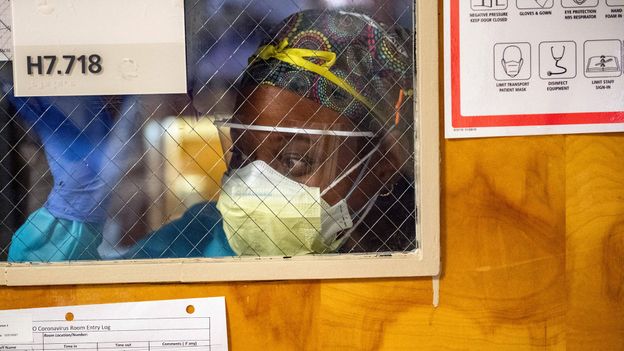With some emerging evidence hinting that micro clots might be a cause of Long Covid – a study in August 2023 even suggested that they could contribute to the cognitive problems experienced by many Long Covid patients – researchers are now concerned that we might go on to see a further spike in chronic cases. However, it would be hard to distinguish whether this is a consequence of the new variant or declining population immunity.
“Studies from the March-summer 2020 period show that the risk of Long Covid from any case, was about 10%,” says Danny Altmann, professor of immunology at Imperial College London. “Now we have far more infections, and the risk of Long Covid looks to have fallen, not because of a milder variant but because of a degree of protection from vaccine doses. A paper in the BMJ on a national cohort in Sweden shows protection goes up with each additional dose.”
This all indicates the ongoing importance for all age groups of remaining up to date with vaccine boosters, but while politicians have long been keen to move on from Covid, Strain says it is vital to keep monitoring how different variants continue to infect us.
“Symptoms do seem to change from one variant to another,” he says. “We’ve had periods where the earliest symptom is headache, and others where it’s more gastrointestinal. We all to go back to life as normal, but the reality is, Covid isn’t going anywhere.”
—
Whatever happened to “Covid toe”?
In the early months of the Covid-19 pandemic, reports of an unusual and baffling symptom of the disease began to emerge – patients were developing painful or intolerably itchy lesions on their feet and hands. These chilblain-like swelling and reddening of the skin became commonly known as “Covid toe”.
Doctors and scientists were puzzled – how did a respiratory virus cause such a strange symptom in the body’s extremities?
Tests on samples taken from people with Covid toe have failed to find the presence of the virus responsible for Covid-19, Sars-CoV-2, in the chilblains, suggesting the virus itself is not directly responsible. Instead, a number of hypotheses have been put forward, including that it could be the result of an excessive response by part of the immune system that produces a protein called interferon IFN-1, which helps the immune system target cells infected by viruses.
Others have suggested that it may not be something specific to Covid-19 at all, and rather just a response that occurs in people who are prone to chilblains anyway.
Another theory was that lockdown rules meant more people were just not wearing adequate footwear around their homes and too much time sitting still.
Curiously, as the virus has evolved and lockdowns have lifted, so too has the apparent occurrence of these cutaneous problems. Research by scientists at King College London, UK, who studied the reported symptoms of more than 348,000 people who logged their Covid symptoms via a mobile app, has revealed that Covid toe and related skin complaints have decreased in more recent waves of the Sars-CoV-2 virus.
They were reported by 11% of people during the wave caused by the Omicron variant, compared to 17% in the Delta variant wave, where symptoms also tended to last longer.
—
If you liked this story, sign up for The Essential List newsletter – a handpicked selection of features, videos and can’t-miss news delivered to your inbox every Friday.
Join one million Future fans by liking us on Facebook, or follow us on Twitter or Instagram.









